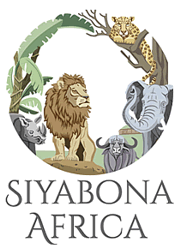
By Leigh Kemp
Deformities are a regular occurrence in the wild and although in many cases the individual is at a disadvantage I have observed a number of cases where the animal survives to adulthood. There are many kids of deformities that can render an animal at a disadvantage.Albinism in Animals
Incidents of albinism are relatively common in the wild. These animals would normally be at a disadvantage due to them standing out in the bush. Possibly the most famous incident of albinism is that of the legendary white lions of South Africa. Pure white, it was first thought to be a case of albinism but has since been found to be a gene mutation that has carried through the generations.
An incidence of albinism that I recorded occurred in a male Kudu in the Chobe National Park in Botswana. This particular animal grew to adulthood, despite the stark contrasts of the white against the colours of the bush. The last sighting I had of this specific animal was when it disappeared into the bushes pursued by a lioness. It is unusual for the animal to have reached adulthood in such a predator-rich area.
Horn Deformity
Horn deformities in antelope usually show a problem with only one horn or two horns not in kilter with one another. This deformity does not have an effect on the health of the animal but it may be a hindrance in the breeding ability of the males when it comes to fighting for dominance.For two seasons I monitored a male Lechwe in the Okavango Delta with what seemed like a horn deformity. The interesting thing was that the two horns were mirror images of each other in their deformity. The 'deformity' did not hinder the animal at all as during both seasons of monitoring it had a harem of females.
I was not there long enough to monitor the male offspring to see whether the deformity passed on. There was one other male with very similar horns that was part of a bachelor herd.

 The dangers for animals in Africa begin from the day of their birth and because of this they have to adapt survival techniques from the very...
The dangers for animals in Africa begin from the day of their birth and because of this they have to adapt survival techniques from the very... Discover incredible insights into Botswana's wildlife behaviour, from predator-prey dynamics to migration habits. Explore how animal behavio...
Discover incredible insights into Botswana's wildlife behaviour, from predator-prey dynamics to migration habits. Explore how animal behavio...